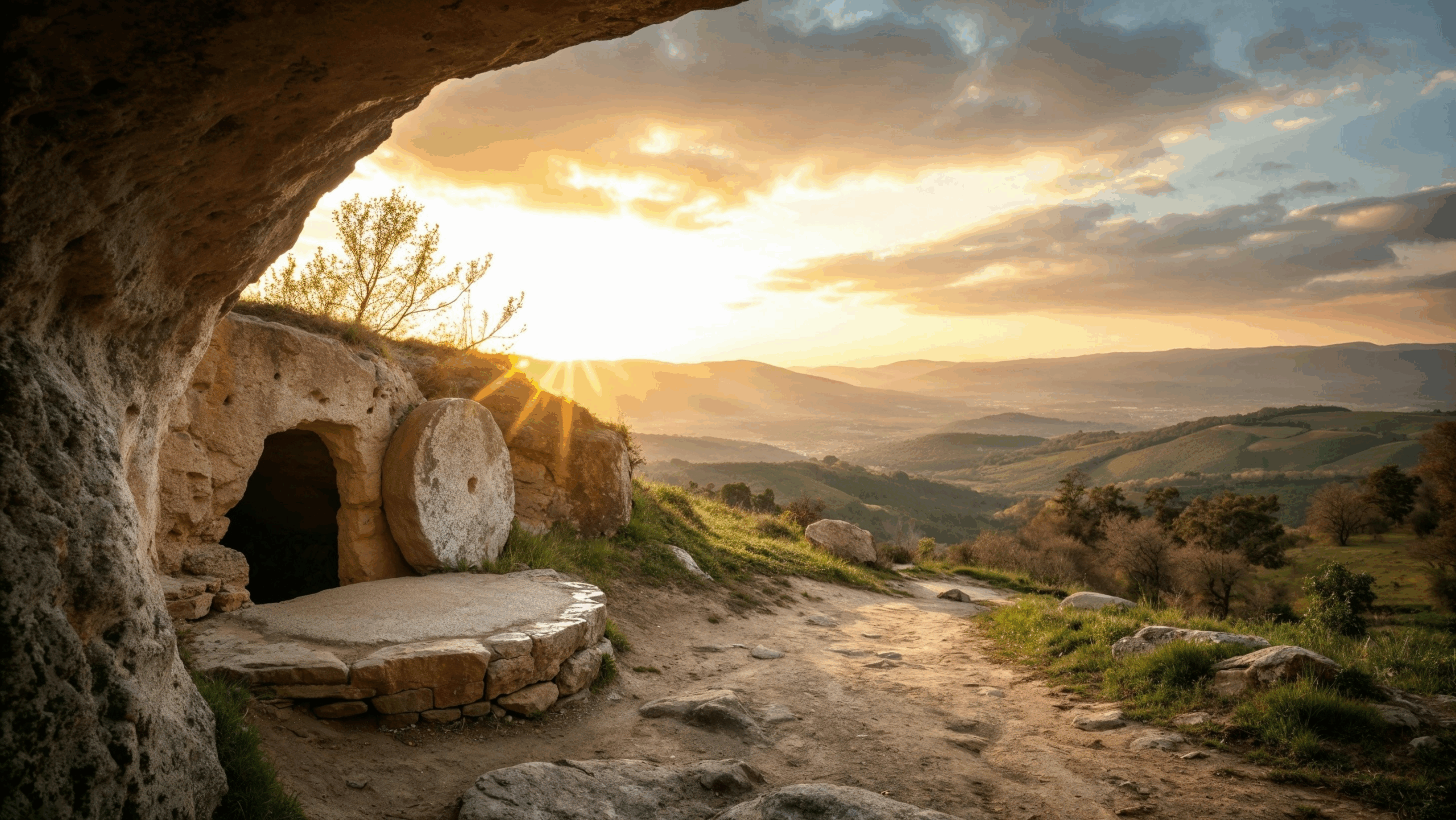
It seemed like nonsense.
That was their first experience of the resurrection—the moment they would eventually come to understand. The women had gone to the tomb to grieve, to anoint Jesus’s body. But when they arrived, the tomb was empty. They were puzzled.
They went and told the men that they had seen angels and shared what the angels had revealed—truths foretold in the Scriptures. But to the disciples, it all seemed like nonsense.
These were the same disciples who had walked with Jesus every day for three years. Over that time, He had formed them, shaped them, and helped them understand the reason He came into the world: to save us from our sins. He told them, again and again, that He would suffer, die, and rise on the third day. He revealed to them the wonder of our heavenly Father, who wants us to encounter His mercy.
And yet, at the end of those three years, when the tomb was found empty—they still didn’t get it.
All they saw was an empty tomb. It wasn’t until they encountered the risen Jesus that they began to believe.
At the tomb, they knew something had happened. They knew His body was gone—but they didn’t comprehend the resurrection.
Then, over time, Jesus began to appear to them. In His resurrected body, He walked through walls and calmed their fears. He said to Thomas, “If you need to put your fingers in my hands and your hand in my side to believe, do so.”
Peter had denied Jesus three times. And yet Jesus had said to him, “You are my rock, and on this rock, I will build my Church.” After the resurrection, Peter was still lost. He said, “Let’s go fishing,” as if returning to his old life. They fished all night and caught nothing.
Then the beloved disciple saw a fire on the shore. At first, they didn’t recognize Jesus—the resurrection is so mysterious—but then the disciple said, “It is the Lord.” Peter, full of excitement, jumped into the sea and swam to shore. Jesus had already prepared a fire, with fish and bread. And before they ate, He asked Peter three times, “Do you love me?” Each time Peter answered, “Yes, Lord, you know that I love you.” It was a moment of reconciliation.
Jesus continued to appear—once to over 500 people at the same time. Each appearance brought deeper understanding. Slowly, they realized: He truly had risen.
And for us, too, coming to understand the resurrection is a process.
Many of us don’t “get it” right away. We return year after year—Holy Saturday after Holy Saturday—so He can continue to reveal this amazing mystery.
Sometimes we show up not fully understanding what Jesus is doing in our lives. Some say, “I don’t get anything out of Mass.” But Jesus wants to reveal Himself now—just as He did to the disciples who walked with Him daily for three years… and still didn’t understand at first.
We have to become disciples too. That means walking with the Lord in personal prayer and in our faith community. That’s when we’ll start to “get it.” Because He still comes to us.
Think of the saints. He revealed Himself to St. Francis of Assisi while he prayed before the San Damiano cross. He gave Francis the stigmata and told him, “Rebuild my Church.” Francis took it literally—restoring one church building after another—until he understood: Jesus meant the people of God.
Jesus is constantly forming us into disciples.
This Tuesday, we begin a new parish series: Journeying with Christ. It’s an opportunity to walk with Him intentionally. Not all of us have spent three years with Jesus, day in and day out—but we can give Him one evening a week for the next eight weeks. We can allow Him to form us.
Jesus also appeared to Sister Faustina. Rays flowed from His heart—blue and white—symbolizing water and blood. He revealed His Divine Mercy and asked her to spread the message. When she told her bishop that Jesus wanted the first Sunday after Easter to be Divine Mercy Sunday, the bishop dismissed her. “Nonsense,” he said.
But Jesus told her to go back. She did. And decades later, St. John Paul II would officially institute Divine Mercy Sunday when Faustina was canonized.
Sometimes, like the apostles, like the saints, it seems like nonsense—until we encounter Him ourselves.
I recently went on retreat. There were parts of my life—like tombs—where I thought I had found healing. But there was still death. Still sin. And Jesus took me back into those dark places. He sat at my feet, put His hand on me, and walked through each memory with me—interceding with the Father. He helped me realize: He was there all along.
In a few moments, we’ll celebrate the Eucharist. There may still be places in your heart that Jesus hasn’t touched yet—but He wants to. Until we encounter Him personally, it can all seem like nonsense. But He is ready to reveal Himself to each of us.
So, during this Mass, ask Him, beg Him to reveal Himself to you in the resurrected life—so we can truly become the disciples He created us to be.
And then go out into the world, saying boldly:
I have seen the Lord.


